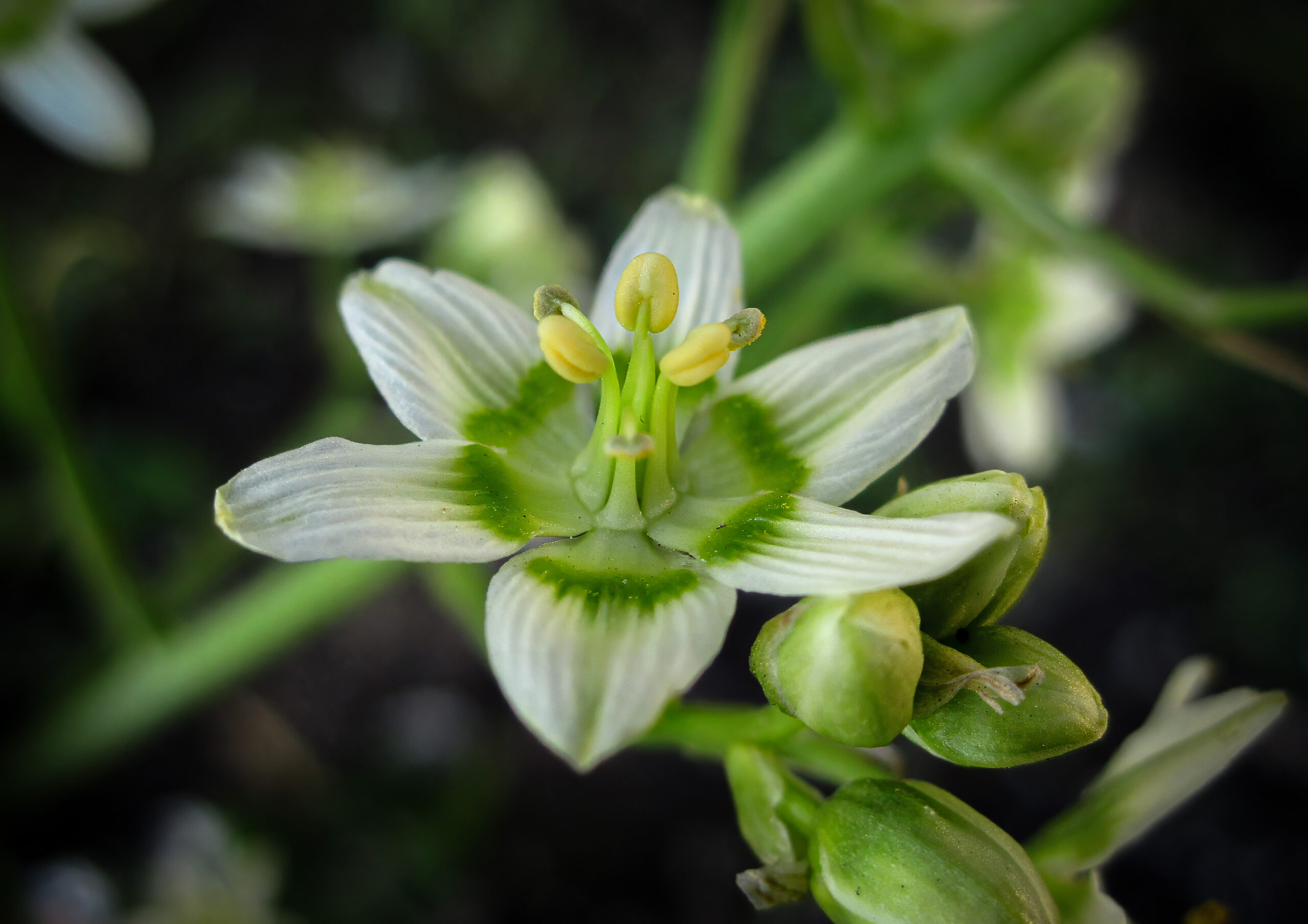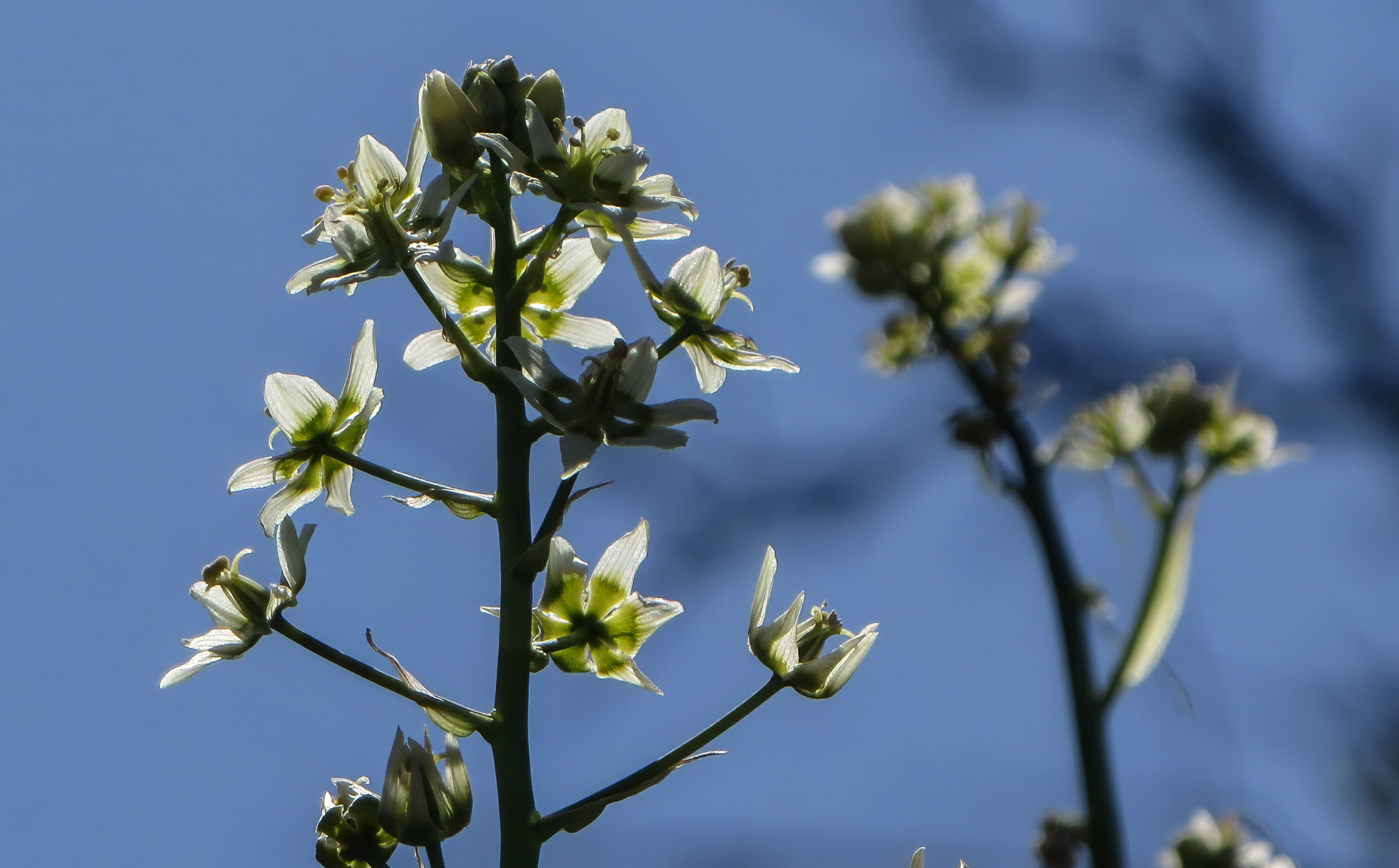Occasional notes on the wildflowers of 91011
Parents should always think carefully about the names they bestow on their children, lest those names become inadvertently off-putting to others! So it would seem in the case of Fremont’s Star-Lily (Toxicoscordion fremontii), also known by the decidedly off-putting name of Death Camas. Is it toxic to eat? Sure, but so are scores of other wildflowers, like Poison Oak (duh) but also the much-adored native Douglas Iris (and all irises, for that matter).

Still, “Death Star” might be a good name if it reminds us that not all beauty is edible! Fremont’s Star-Lily is a member of a larger group of wildflowers known as deathcamases, because they resemble flowers in the Camas genus (Camassia), which have edible bulbs. Actually, though, the flowers of the Star-Lily are quite different from the thin petals of most Camas flowers. It’s only when you’re looking at dried-up plants in the fall, when bulbs might be harvested, that the two plants could be confused. Notably, of the three species of Camas found in California, none occurs anywhere near Southern California.

So, if you can set death star aside in favor of finding instead a star-lily, this is a scarce flower that is all the more delightful to find at Cherry Canyon. Its blossom is unmistakable: a six-point white star with a green inner circle that unites the petals and sepals. It has strappy leaves that run 9″ to 18″ in length, and in a good season the plant can reach 18″ in height. It’s also a fire-follower, which means that it’s especially likely to germinate in big numbers after a brush fire. For instance, after the La Tuna Fire (in the Verdugo Mtns., 2017), there were hillsides now denuded of chaparral shrubs but dense with hundreds of Fremont’s Star-Lilies.

Towering Star-Lilies after the La Tuna Fire of 2017
Where and when to find it. Fremont’s Star-Lily is much more common in the Santa Monica Mtns. than it is around here. But it has been observed in a handful of places in the nearby Verdugo Mtns., so it’s fair to expect it more often at Cherry Canyon, where it has occurred in at least three locations. One of these is easy to find: the very summit of Cerro Negro, where it grows in the shade immediately south of the fence around the lookout. Statewide, it blooms from March into May, but mid-April seems to be the best time to look for it at Cherry Canyon.
- For more about Toxicoscordion fremontii, visit Wikipedia.
- For information about growing Fremont’s Star-Lily in your yard, visit Calscape.org.
- For distribution maps, taxonomy, and more photos, visit Calflora.org.
- And go here to read other occasional notes on the wildflowers of 91011.

